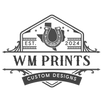In recent years, the realm of architecture has witnessed an extraordinary evolution, largely driven by the advent of 3D printing technology. This technological marvel is not only redefining the possibilities in design and construction but is also paving the way for more sustainable and innovative architectural practices.
Innovation in Design and Construction
One of the most significant impacts of 3D printing on architecture is the freedom it offers in design. Complex geometries that were once considered too costly or impractical to produce are now becoming feasible. This allows architects to explore creative solutions and push the boundaries of traditional architectural forms.
Moreover, the precision of 3D printing significantly reduces construction waste. With the ability to create materials layer by layer, the process minimizes excess material usage, leading to more sustainable building practices. Additionally, this precision can be harnessed to create intricate detailing that would be impossible or too time-consuming to achieve by hand.
Sustainability and Efficiency
3D printing also provides a more sustainable approach by using biodegradable materials and recycled resources. This not only lessens the environmental impact but also cuts down on the carbon footprint associated with traditional building methods. Furthermore, the efficiency of the process decreases the time needed for construction, allowing for projects to be completed faster and with less reliance on manual labor.
The architectural industry is poised to benefit from this shift towards sustainable practices. By integrating 3D printing into their projects, architects can create environmentally conscious designs that remain economically feasible.
Applications in Modern Architecture
The use of 3D printing in architecture isn't limited to aesthetics and construction efficiency. It has practical applications in building temporary housing solutions, especially in disaster-prone areas. For instance, 3D printed structures can be quickly assembled to provide immediate shelter, highlighting the technology's potential in addressing global housing challenges.
Furthermore, architectural firms are increasingly using 3D printed models to communicate their design intent with clients and stakeholders. This enhances understanding and collaboration, leading to better outcomes for all parties involved.
Tools Enhancing the Process
As 3D printing becomes integral to architectural practices, the tools supporting this innovation are equally vital. For architects and designers working with 3D printed components, having a reliable toolset is crucial. For instance, the Lyman Type prep tools holder is a perfect fit for ensuring accuracy and organization in the workspace. Such tools facilitate the smooth operation of 3D printing tasks, enhancing the overall workflow and output quality.
In conclusion, 3D printing is reshaping the architecture landscape by offering innovative design possibilities, improving sustainability, and enhancing efficiency. As this technology continues to evolve, it will undoubtedly lead to groundbreaking changes in how we conceive and construct the built environment. To explore more products that support these advancements, visit WM Prints.





